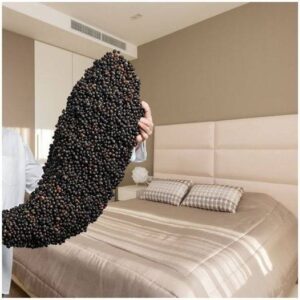Evolution is an interesting and enigmatic phenomenon. The idea that all mammals, including ourselves, are interconnected somehow is fascinating. One that can be difficult to fully grasp – where do we find proof of evolution? Evidence of our ancestral heritage, tracing back from early apes to Neanderthals and ultimately to the modern Homo sapiens we have become, is abundant. Numerous internal and external characteristics we possess are merely remnants passed down from our predecessors. Many of these features no longer serve a practical purpose in our current lives. As many people no longer scavenge for food or wander as nomads, we still retain these almost useless traits. They have been passed down to us from a time when they were crucial for survival. Take, for instance, the strange feeling of getting goosebumps. It is not merely a random occurrence. Our mammalian ancestors, when experiencing cold temperatures, had a familiar way of dealing with the problem. Goosebumps served as a mechanism to increase their surface area and retain heat. A muscle connected to our arm hairs contracts when we are cold—causing the hairs to stand upright and creating bumps on the skin.

But there is one trait that undeniably shows proof of evolution
One truly remarkable evidence of evolution lies within our arms, specifically within our tendons. A tendon has been evolutionarily phased out in almost 10-15% of the human population, suggesting that we humans are far from reaching the end of evolution. This tendon is associated with an ancient muscle known as the palmaris longus, which was predominantly used by arboreal primates such as lemurs and monkeys to aid in their movement from branch to branch. As humans and ground-dwelling apes like gorillas no longer rely on this muscle or tendon, both species have gradually been losing this internal function. Nonetheless, evolution operates at its own pace – slowly, so nearly 90% of humans still retain this vestigial trait passed down from our primate ancestors. To check if you possess this tendon, place your forearm on a table with your palm facing upwards. Touch your pinky finger to your thumb and slightly lift your hand off the surface. If you observe a raised band in the middle of your wrist, you have the tendon connected to the still-existing palmaris longus.





